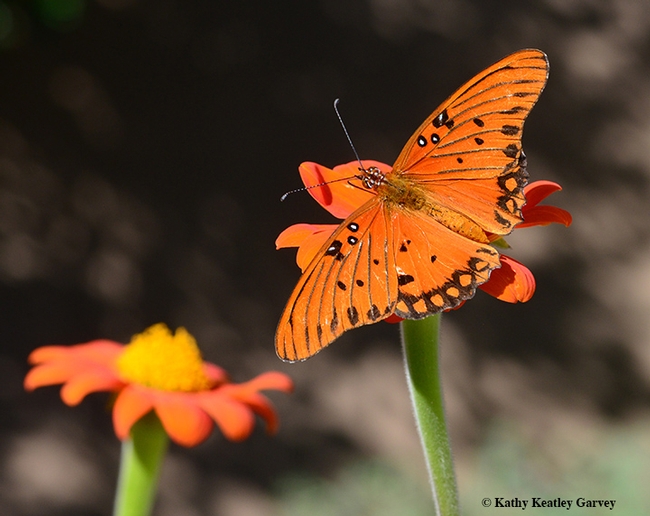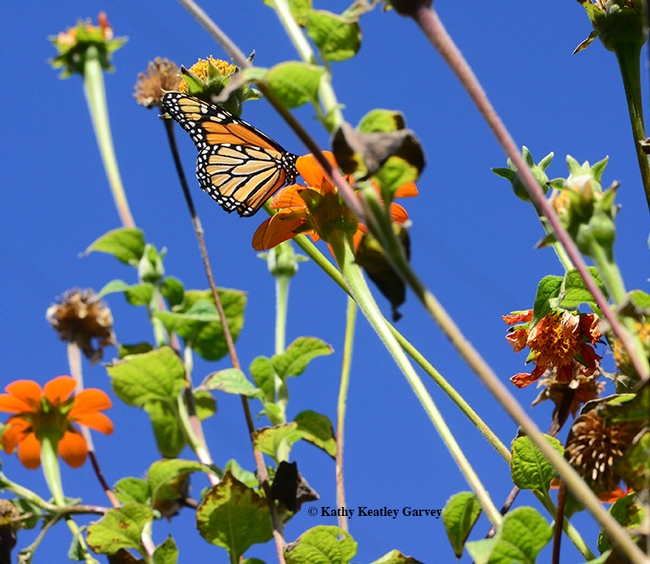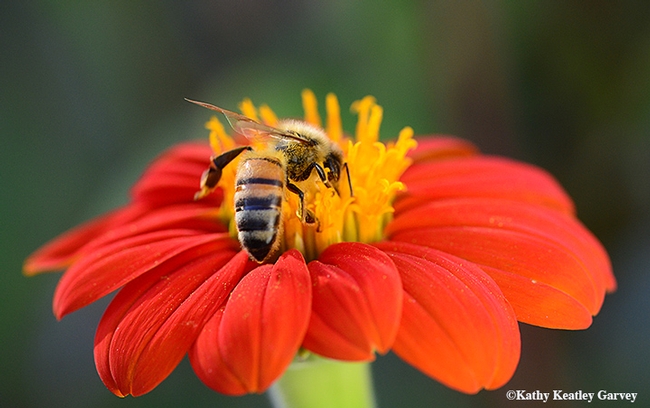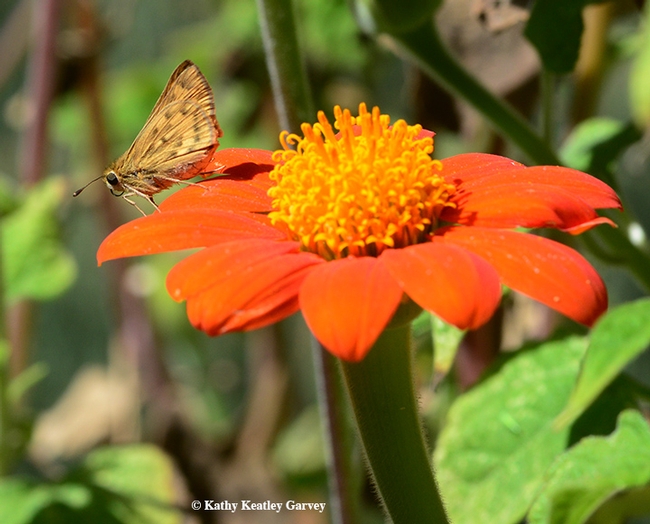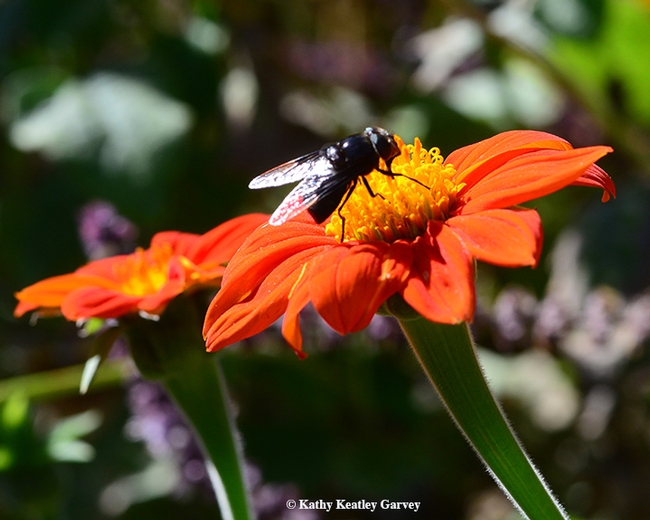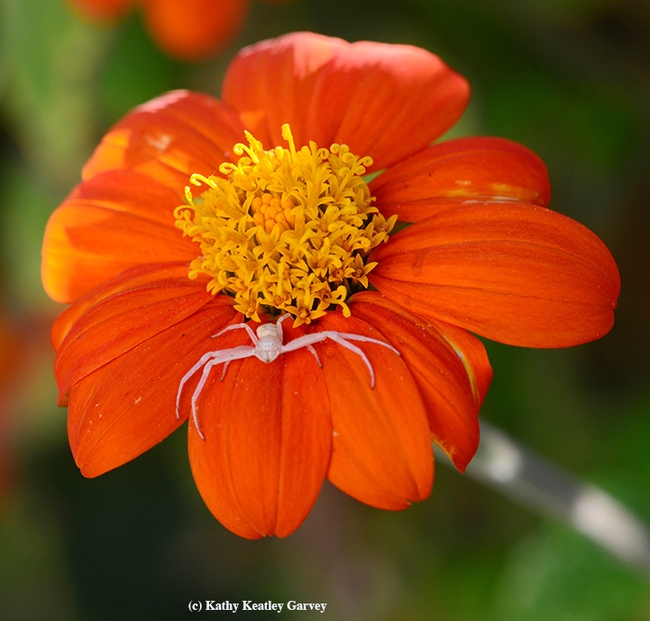- Author: Kathy Keatley Garvey
If you've been ignoring your calendar, you may have not realized that autumn began Sept. 23.
We know it as the season between summer and winter, when days grow shorter, when liquidambar leaves turn red, and when the blanket flower lives up to its name.
The blanket flower, Gaillardia (family Asteraceae) has mastered the colors of fall. It's rimmed in gold and glows maroon.
Wikipedia tells us that the school colors of Texas State University are maroon and gold, "a combination inspired by the colors of the Gaillardia."
If you're lucky, you'll see a last-of-the-season Gulf Fritillary, Agraulis vanillae, hanging from the blossom, its silver-spangled underwings sparkling.
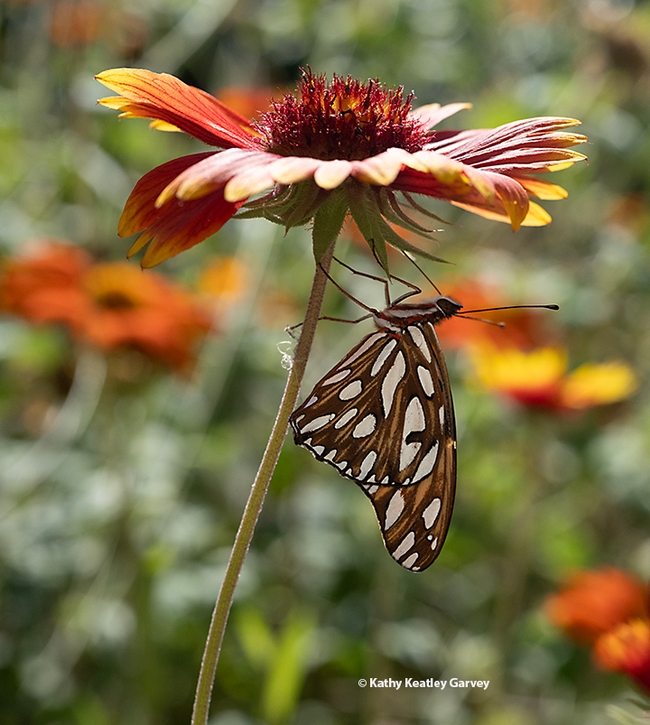
- Author: Kathy Keatley Garvey
If there's any flower that should be crowned "Autumn's Majesty," that would be the Mexican sunflower (Tithonia rotundifolia), aka "Torch."
A member of the sunflower family (Asteraceae), it carries "the torch of life" throughout spring, summer and autumn, but it's especially important in autumn when few plants offer sustenance to insects, especially to migrating monarchs. The colorful annual has been blooming in our yard since April, reaching 10-to 15-foot heights (thanks, drip irrigation).
What loves this delightful orange blossom, besides the human beings who grow it?
Over a weeklong period, we photographed dozens of autumn critters, including monarchs, Gulf Fritillaries, hover flies, honey bees and crab spiders.
Every bee garden needs an "Autumn Majesty" and the Mexican sunflower fills the bill. When it goes to seed, finches and other birds will take what's left.
